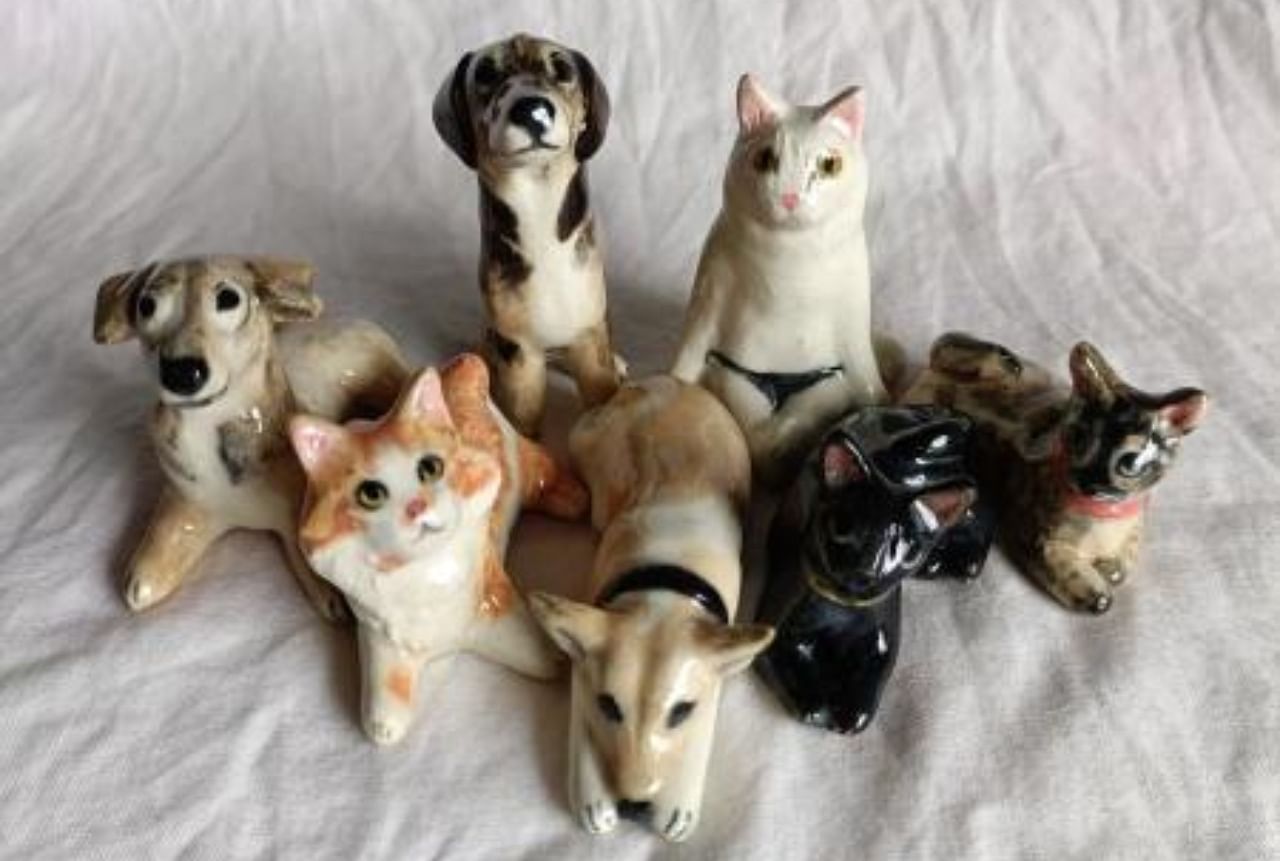

Divya Chandrashekar’s Instagram page is proof of why we love miniatures. You can’t resist scrolling down her posts on the ‘mini pets’ she makes from clay.
Pint-sized versions of dogs are aplenty — from ones staring at humans with puppy eyes to sitting royally perhaps in wait for a treat, peering out of cartons, enjoying a chicken piece, or idling next to a slipper. Cat poses are equally relatable — yowling skywards, stretching belly up, stamping a notebook, curling up on blankie-beds, sitting aloof and grumpily, or squishing and hugging each other.
These clay minis are modelled after real-life pets, including rabbits, whose pictures Divya often uploads to demonstrate the ‘before and after’ comparison. Funny reels of a cat knocking its miniature down and a dog inspecting its tiny self also feature on her timeline.
“Unlike painting, it is challenging to make a 100% 3D replica with clay. Clay is an unpredictable medium. You need to be mindful to minimise the risks at each step — from shaping to attaching parts and firing it,” says Divya, a Bengaluru resident who has switched careers from advertising to pottery.
Sculpting the face right is significant. “I observe the position and colour of patches and dots on the face, length of the nose, if ears are hanging up or down, or if eyes are too close or far,” says the 41-year-old.
For this, Divya asks people to share photographs of their pets and details about their personalities, accessories like bow and bells, and props. If they don’t have high-resolution snaps of a pet who has passed on, she looks up the breed online for reference. She also relies on her instinct as a dog parent. “I have a Beagle. I call him Mojo,” she shares.
She has sculpted about 150 pet miniatures in four batches in the past year and a half. This is a small number but with clay, you can’t rush things, she emphasises. Every piece is hand-built and downsizing dogs and cats to about 5-6 cm models requires focus and patience.
Moreover, she doesn’t own a kiln to fire clay at her home setup. For every batch, she currently visits a pottery studio to use their kiln once for bisque firing (it lends strength to the unfinished product for further handling) and another time for glaze firing (the glaze melts and deposits a glassy coat on the finished product, and the clay reaches its maturity).
“Firing is done in batches and never for a single article. So I have to prepare my
batch first,” she shares why the orders take at least two months to fulfil. Currently, she gets orders from people who want to gift minis to pet owner-friends, to have a keepsake of a pet they lost or when they are travelling, or to spruce up their desks. She plans on getting a home kiln this year to take on bigger orders.
Lastly, she draws our attention to glazing. “With poster colours, you get the colour you see. But glazing is pure chemistry. Sometimes, the tone and shade can turn out different after the firing. For instance, a brown may acquire a tinge of orange or red, or it may come out darker or lighter than expected. The underglazes I use for painting are still more predictable than other coloured glazes,” she signs off.
She takes orders periodically. Email dibba.shekar@gmail.com or check divvy_upp on Instagram.